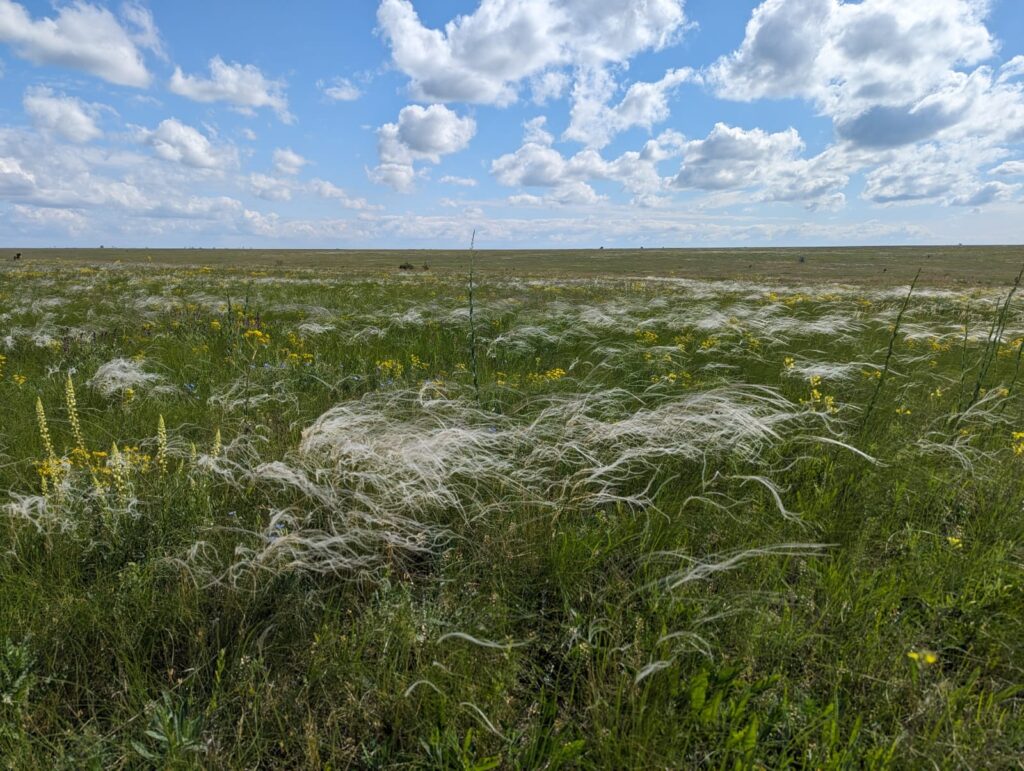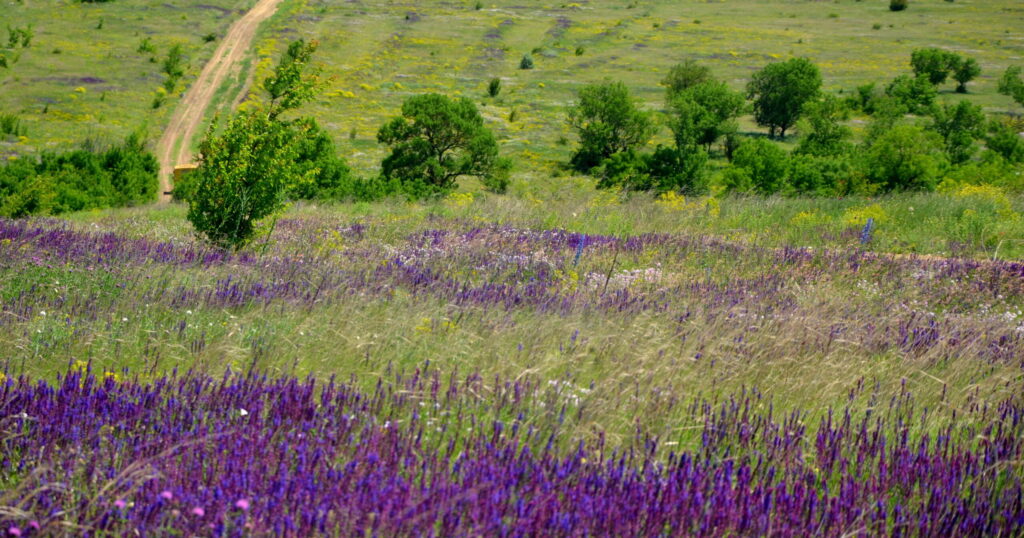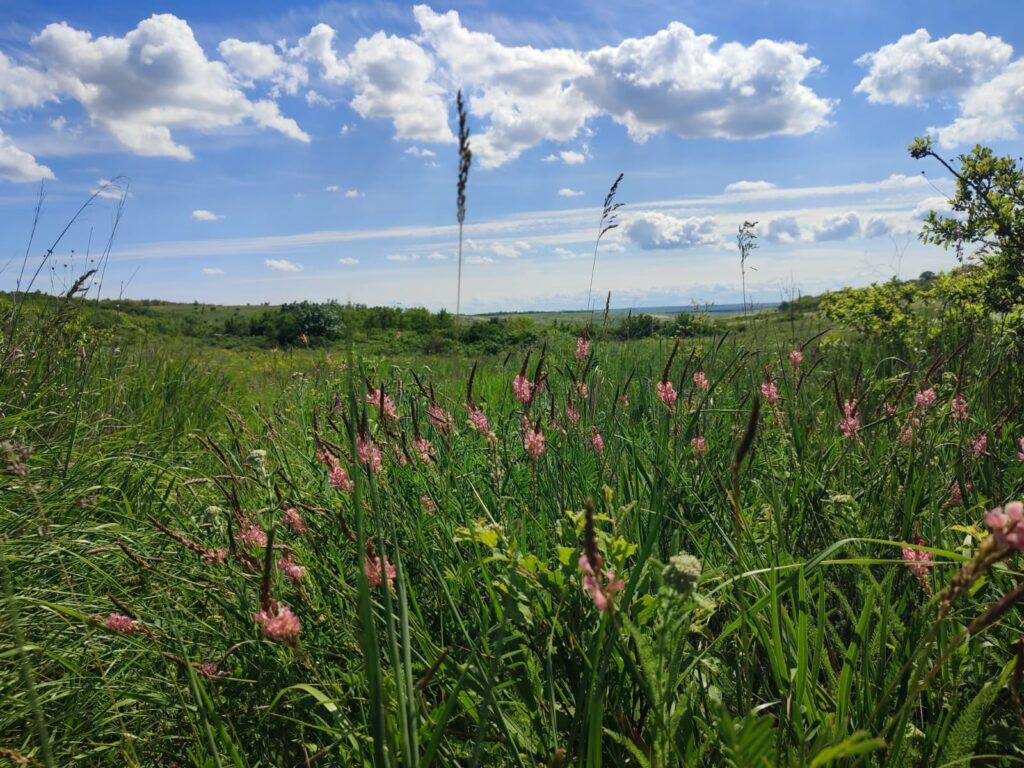We are pleased to start the year with some encouraging news: species and habitats listed in the Resolutions of the Bern Convention may soon benefit from enhanced protection in Ukraine. This progress is linked to improvements in the management of Ukraine’s Emerald Network, and Rewilding Ukraine is proud to play an active role in this important initiative.

Why this activity matters
In late October 2024, the initiative “Supporting the protection of biodiversity and natural ecosystems (Emerald Network) in Ukraine” was launched. This initiative holds significant importance, not only for its efforts to safeguard Ukraine’s rich natural heritage but also for paving the way toward the long-term recovery of natural areas that have been variably impacted by the war. By focusing on diverse types of Emerald Network sites, the initiative aims to ensure effective management through a participatory approach.
Who is Involved
The consultancy services for this project are being provided by a consortium led by Particip GmbH (Germany), with Rewilding Ukraine (Ukraine) as a partner and the Conflict and Environment Observatory (CEOBS) (UK) as a subcontractor.
The consortium has been contracted by the World Bank to strengthen Ukraine’s capacity to protect species and habitats listed under the Resolutions of the Bern Convention. This work forms part of the EU4Environment Programme’s Result Area 4: Ecosystem Services and Livelihoods, implemented by the World Bank on behalf of the Ministry of Environmental Protection and Natural Resources of Ukraine.
Main Tasks of the Project:
- Impact Assessment Guidelines: Developing guidelines to assess the effects of human activities and military actions on Emerald Network sites, along with strategies for site restoration and management.
- Management Guidelines: Elaborating guidelines for preparing Emerald Network Management Plans for these protected areas.
- Case Study Development: Preparing recommendations for management plans based on three Emerald Network sites as case studies.
- Capacity Building: Developing a knowledge-sharing program to enhance institutional capacity for managing the Emerald sites.
Pilot sites:
Three pilot sites have been selected as case studies for elaborating different management models for different types of Emerald Network sites respecting distinctions between them in terms of area extent, types of their ecosystems and landscapes, their conservation status and management systems, and specifics of anthropogenic pressures and military impacts. Rewilding Ukraine’s team is well-experienced in working in the geographic area carrying out ecological restoration projects there for almost three decades, especially focusing on the Danube Biosphere Reserve and the Tarutino Steppe where currently large-scale rewilding actions are being implemented supported by the Cambridge Conservation Initiative’s Endangered Landscapes & Seascapes Programme.

Danube Biosphere Reserve (DBR) covers 50,213 ha, and is part of the UNESCO Trans-boundary Danube Delta Biosphere Reserve shared between Ukraine and Romania. Renowned for its wetland and coastal ecosystems of high conservation value, the DBR has faced severe damage since the onset of Russia’s full-scale invasion of Ukraine. The reserve has suffered from shelling, drone attacks, fires, drifting naval mines, and other explosive remnants of war. In addition to ecological destruction, these wartime threats have significantly impacted local livelihoods, with restrictions on fishing and tourism further exacerbating the challenges faced by communities. As a case study, the DBR provides a crucial opportunity to develop methodologies for assessing damage caused by military operations and to create innovative approaches for the ecological restoration of wetland and coastal environments.

The Tarutino Steppe, an Emerald Network site covering 6,176 hectares, is largely encompassed within the Tarutino Steppe Landscape Sanctuary. During the Soviet era, this area was used as a military training field, which inadvertently preserved the steppe and its vegetation in an almost natural state. However, the landscape also bears the impacts of past military activities, including training operations and the construction of military infrastructure. While the military facilities no longer exist, their remnants are still visible across the steppe. Although the Tarutino Steppe has not been directly affected by the ongoing Ukraine-Russia war, its significance as a case study is immense. It offers a valuable example of the conservation and ecological restoration of steppe ecosystems previously used for military purposes. This success story provides a model for restoring steppe areas in southeastern Ukraine that have been critically damaged by the current war, underscoring the potential for recovery and long-term ecological resilience in such landscapes.

The Besarabia Kolkhikum, an Emerald Network site covering 4,723 hectares, is located in the southwest of the Odessa Region. This area comprises steppe gullies and man-made woodlands and is recognized for its high ecological value. However, it currently lacks formal conservation status, making it vulnerable to threats such as plowing, conversion to croplands, afforestation, and the spread of invasive non-native plants, all of which contribute to the degradation of the steppe ecosystem. Although the site has not been directly impacted by the ongoing war, the indirect effects are evident. The increased risk of steppe areas being converted into croplands as a response to the war’s broader agricultural pressures highlights its precarious situation.
Stakeholder engagement:
Stakeholder engagement is crucial for ensuring the effective protection and management of the Emerald Network in Ukraine, both at the national and local levels. Our team is committed to cooperating with stakeholders across various sectors and levels of influence.
Given that the draft Law of Ukraine “On the Emerald Network Sites” has not yet been adopted, engaging with stakeholders—particularly local communities—and raising awareness about the importance of protecting and managing Emerald Network sites are essential strategies. These efforts not only support biodiversity conservation but also contribute to the sustainable development of local communities.
The ongoing full-scale military aggression by Russia has introduced new threats and, in some cases, caused devastating damage to natural ecosystems, including Emerald Network sites. Assessing these impacts and devising plans to mitigate them require active stakeholder involvement. This includes gathering evidence and data from the ground and identifying appropriate measures to address the challenges posed by wartime conditions.
By fostering collaboration and engagement, we aim to strengthen the resilience and long-term sustainability of Ukraine’s Emerald Network.